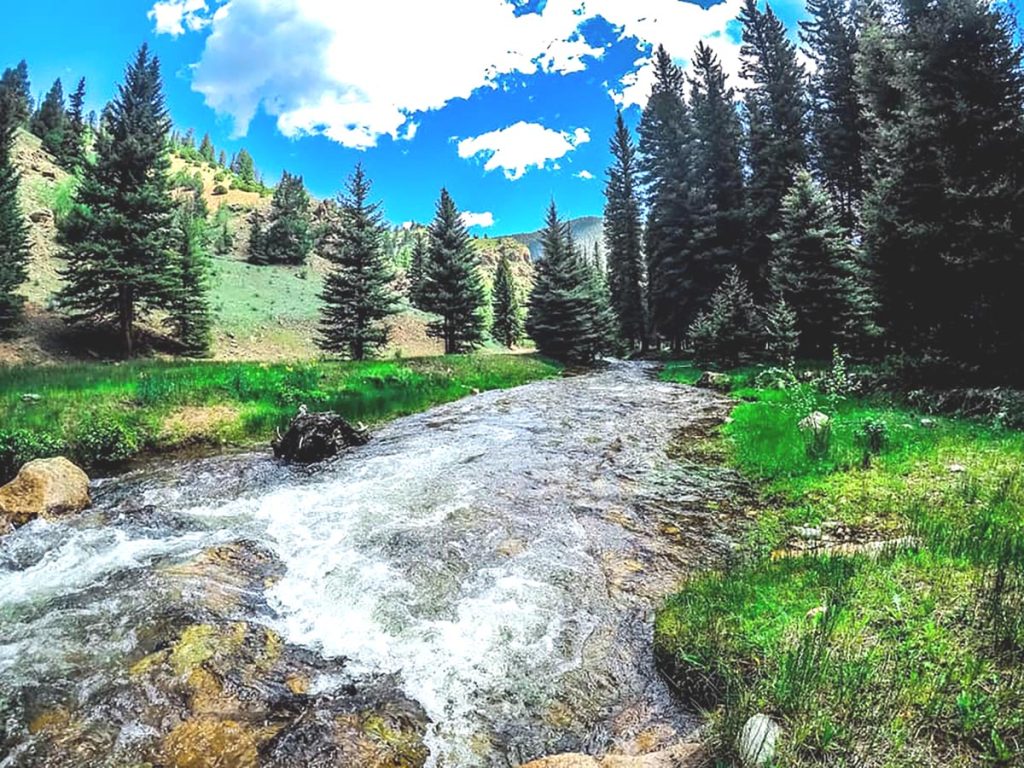
The largest stream restoration project in New Mexico history is right here in our backyard: the Rio Costilla watershed now has over 120 stream miles, 16 lakes and one reservoir restored for Rio Grande cutthroat trout and other native aquatic species like Rio Grande chub and Rio Grande sucker. This decades long project began in the 1990s as an ambitious goal to bring back Rio Grande cutthroat trout— New Mexico’s state fish and a species of special concern— to its native waters.
On July 1st, the New Mexico Game and Fish and the U.S. Forest Service will host a “Trout Celebration”, a public event to recognize the completion of the final stage of this 30-year restoration project on the Rio Costilla. New interpretive signs will be unveiled on Forest Road 1950 (approximately 12 miles east of Amalia) in the morning to tell the success story of how partners including Game & Fish, U.S. Forest Service, Turner Enterprises Inc., Colorado Parks and Wildlife, U.S. Fish and Wildlife Service, Cimarron Watershed Alliance, Quivira Coalition and Trout Unlimited worked together to enhance conservation and recreation opportunities for Rio Grande cutthroat trout. Starting at noon, native trout will be stocked at sites along the Rio Costilla. A celebratory picnic will be held at Shuree Ponds, the ponds’ opening day for fishing, with food and fishing activities for families and volunteers who help with the stocking.
The road to restoration for the Rio Costilla was a long-winded effort driven by collaborative partnerships within the communities of northern New Mexico. The restoration activities conducted included the removal of non-native fish species and then stocking the waters with transplants from existing wild populations and hatchery-raised trout from the Lisboa Springs Fish Hatchery in Pecos. Temporary and permanent barriers to fish passage were assessed throughout the Rio Costilla watershed, including Latir and Commanche Creeks. These barriers prioritized natural or existing impediments to fish passage, such as waterfalls and culverts that disconnect streams by elevation differences too difficult for fish to navigate.
Today you will find the Rio Costilla as a diverse ecosystem with a combination of high gradient and meandering meadow streams and wetlands fed by headwater lakes and the Costilla Reservoir. These streams offer cold and clean water for aquatic species to thrive, and some of New Mexico’s best opportunities to fish for Rio Grande cutthroat trout. After three decades of work, we celebrate the restoration of the Rio Costilla as more than just habitat improvements for trout, but also for the benefits to northern New Mexico communities reliant upon clean water and healthy rivers to support agriculture, outdoor recreation, and cultural values. ¡Viva el Río Costilla!


